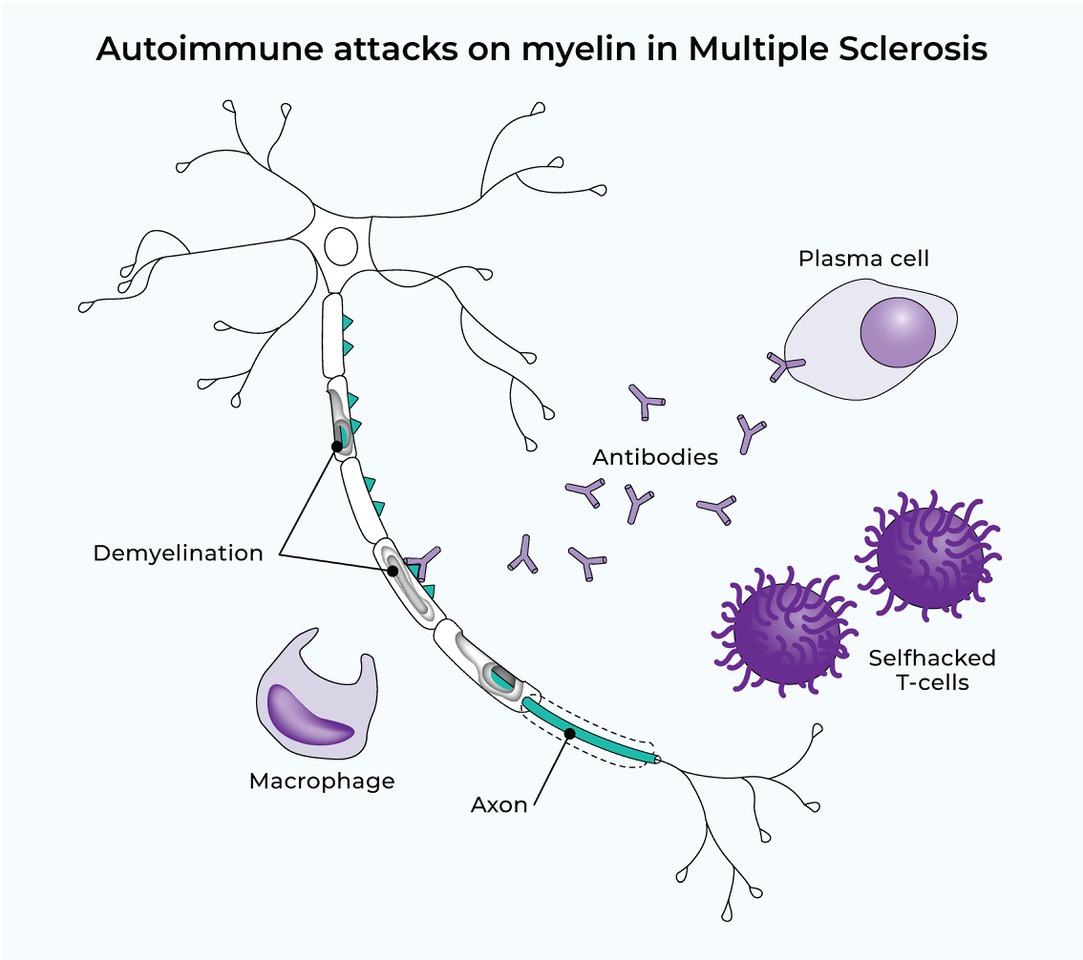Multiple Sclerosis and white matter at a glimpse
What is at stake?
First cause of severe non-traumatic disability in young adults, multiple sclerosis is an immune inflammatory disease that assaults myelinated axons in the central nervous system, damaging the myelin and axon to varying degrees. This dysfunction of the immune system leads to lesions that cause motor, sensory, cognitive, visual and sphincter disturbances.
Nowadays, while current treatments can reduce relapses and improve patients’ quality of life, they are often not sufficiently effective to prevent the progression of disability in the medium term.
Approximately
2.3 million
people worldwide are affected
Most patients present their first symptoms between the ages of
25 and 35
with a high proportion of women
3 women
for every man
Why does white matter matter?
Multiple sclerosis is an inflammatory disease of the central nervous system (brain, spinal cord and optic nerves).
It is characterized by lesions known as plaques, in which the protective sheath of neurons known as myelin is destroyed, leading to degeneration of the neurons and loss of communication between the brain and peripheral organs. Myelin, which is part of white matter, provides a protective sheath for nerve cell extensions, called axons. It also facilitates faster conduction of nerve impulses.
This disease is called autoimmune because the immune system, whose role is to protect the body against pathogenic agents (viruses, bacteria), in this case attacks a compound in the body itself, known as “self”, in this case myelin.

How measuring the brain can become a game changer in treatment and drug development?
Today, there is no cure for multiple sclerosis. Treatments typically focus on speeding recovery from attacks, reducing the frequency of new radiographic and clinical relapses, and managing multiple sclerosis symptoms.
The diagnosis of Multiple Sclerosis poses significant challenges due to the lack of a specific diagnostic biomarker. Currently, the diagnosis relies on a combination of criteria including clinical examination and imaging techniques. While these criteria are sensitive, they lack specificity, leading to a high misdiagnosis rate and resulting in inappropriate patient care and management.
Measuring neurodegeneration in multiple sclerosis through white matter alterations enables several critical advancements:
-
- A better diagnosis and follow-up of progressive forms,
- New insights for the evaluation of treatment efficacy in clinical trials
- Precision neurology approaches, allowing an optimal use of already existing and upcoming drugs.
References:
– Krajnc N, Berger T, Bsteh G. Measuring Treatment Response in Progressive Multiple Sclerosis-Considerations for Adapting to an Era of Multiple Treatment Options. Biomolecules. 2021 Sep 10;11(9):1342.
– Solomon AJ, Naismith RT, Cross AH. Misdiagnosis of multiple sclerosis: Impact of the 2017 McDonald criteria on clinical practice. Neurology. 2019 Jan 1;92(1):26-33.
– Dighriri IM et al., An Overview of the History, Pathophysiology, and Pharmacological Interventions of Multiple Sclerosis. Cureus. 2023 Jan 2;15(1):e33242.
– Gold R, Wolinsky JS. Pathophysiology of multiple sclerosis and the place of teriflunomide. Acta Neurol Scand. 2011 Aug
– Dighriri IM et al., An Overview of the History, Pathophysiology, and Pharmacological Interventions of Multiple Sclerosis. Cureus. 2023 Jan 2;15(1):e33242.
BRAINTALE, whose head office is 11 rue de l’Académie 67000 – STRASBOURG, is registered with the Trade and Companies Register under number 840 995 138 RCS STRASBOURG
Last update : 09/07/2024

